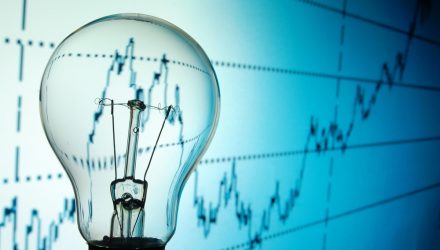Consumers are feeling the bite of rising energy costs as inflation continues to rack the capital markets. ETF investors have an opportunity to hedge inflation, however, by banking on higher renewable energy costs.
The cost-benefit analysis could prove that despite rising renewable energy prices for materials, the savings benefits of using them could win out in the long run. According to a Barron’s article, renewable power purchase agreements skew towards the long term with at least 10-year agreements, allowing buyers to lock in low rates now before they go higher in the long-term horizon.
“If anything, people are feeling more nervous about what’s going to happen in the state of natural gas and other traditional energy production prices,” said Gia Clark, LevelTen’s senior director of developer services. “There’s even more confidence that maybe you’re paying a premium now but over the course of that time frame you’re going to end up even or better from a financial perspective.”
Targeted Exposure to Disruptive Materials
As the cost of materials rises, this could help propel the Global X Disruptive Materials ETF (DMAT) over time. The fund seeks to provide investment results that correspond generally to the price and yield performance of the Solactive Disruptive Materials Index.
The fund seeks to invest in companies producing metals and other raw materials that are essential to the expansion of disruptive technologies, such as lithium batteries, solar panels, wind turbines, fuel cells, robotics, and 3D printers. Targeted materials include companies involved in the exploration, mining, production and/or enhancement of rare earth materials, zinc, palladium, platinum, nickel, manganese, lithium, graphene, graphite, copper, cobalt, and carbon fiber.
Overall, DMAT gives investors:
- High growth potential: Forecasts suggest that the global rare earth elements market could more than double between 2020 and 2028 (from $2.2 billion to $5.5 billion), highlighting one of several growth opportunities among the categories that DMAT invests in.
- Structural tailwinds: DMAT provides exposure to materials that are core to powering disruptive innovations, leading to potentially greener and more efficient transportation, energy, and manufacturing systems.
- Unconstrained approach: The universe of companies involved in the supply of disruptive materials defies traditional categorization. DMAT invests accordingly, with global exposure across multiple sectors and industries.
For more news, information, and strategy, visit the Thematic Investing Channel.

